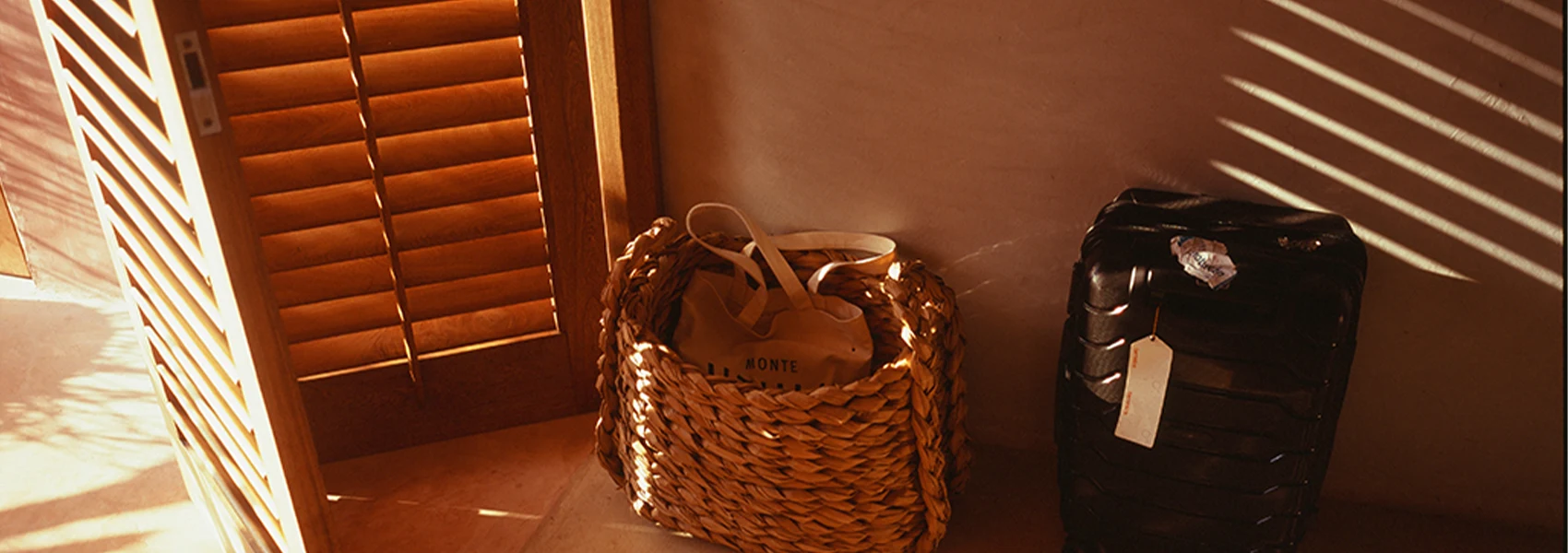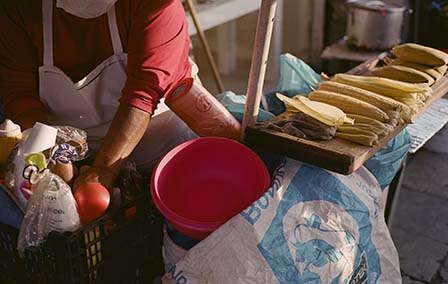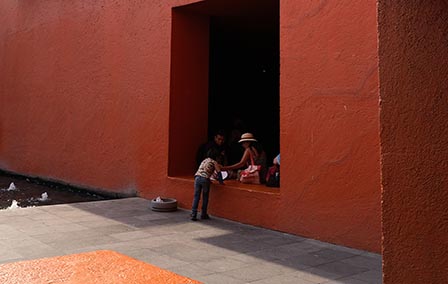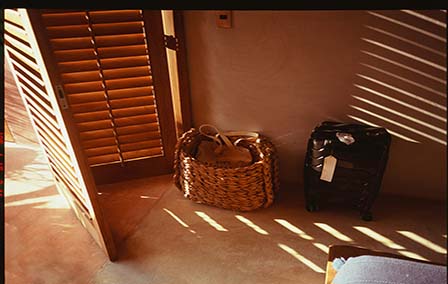
Published 1st Sep. 2024
Reading time
Last updated: September 2024 by our Mexico specialist, Oliver.
Generally speaking, Mexico is considered a safe country to visit. It’s a popular travel destination known for its rich culture, beautiful beaches and historical landmarks. If you’re keen to explore this part of the world but find yourself asking the question, ‘Is it safe to travel to Mexico?’ the short answer is yes. But, as with any country, it has its fair share of safety concerns that travellers should be aware of before planning a trip. It’s natural to be unsure: there are lots of stories told about the violent crimes committed here, and we’re all aware of drug cartels and the presence they have in the area, never mind recent political instability. But the likelihood of finding yourself in a sticky situation often depends on where it is you’re going. Just as there are some areas to avoid, there are plenty of friendly places with beautiful surroundings. You’ll probably feel safer in typical tourist destinations and major urban centres like Mexico City, Guadalajara and Monterrey. Ultimately, if you use your common sense, conduct a little research and stay clued up about the situation in the area, then you’re putting yourself in the best position to have a safe and enjoyable trip. Still wondering, ‘Is it safe to travel to Mexico?’ keep reading for some more information on how to take care of yourself, as well as suggestions on where to visit.
This is perhaps the main reason travellers are cautious about visiting Mexico. This country does have a high crime rate, particularly in certain areas where drug trafficking and organized crime are rife. In recent years, the Mexican government has taken steps to improve safety and security. Some of these measures include increasing police presence and launching targeted operations against criminal groups. Despite these efforts, crime and violence is still a concern, particularly in the northern states of Chihuahua, Coahuila, Durango, Nuevo Leon, Sinaloa and Tamaulipas. The key to staying safe is to always be aware of your surroundings and the potential risks so that you can take appropriate precautions. Stay away from areas that are known to be dangerous, try to travel with other people (that you trust), don’t go out alone at night and always keep your valuables secure.
The Yucatan Peninsula is considered to be one of the safest regions in Mexico for tourists. It has relatively low levels of crime and violence, particularly in comparison to other parts of the country, and is home to popular tourist destinations such as Cancun, Playa del Carmen, Tulum and Chichen Itza. Its capital, Merida, has the lowest crime rate in the region and is also one of the most affordable cities in the country, so it’s well worth a visit. It's still important to be street-smart here, though. Like all bustling cities, there are pickpockets operating in the area so don’t travel with any excess cash or valuable items (like your passport!) – it’s best to leave these in a safe while you’re out and about. If you're carrying a rucksack or bag, ideally wear it around your front and keep a firm grip on it. There is another potential risk in this area: natural disasters. This is because the region is located in the path of many tropical storms and hurricanes that can cause significant damage and disruption to travel plans. So it's also crucial that you stay informed about weather conditions and follow any guidance from local authorities during a storm.
We won’t deny it: Mexico City has long been known for its crime and violence. However, it's important to remember that this is only really in certain areas and neighbourhoods of the city rather than the city as a whole. Many parts of Mexico City are safe for tourists, so don’t be put off by what you may have heard. The historic centre, Chapultepec Park and the trendy neighbourhoods of Condesa and Roma are all great places to wander around. Based on reputation, we’d suggest you avoid (or at least approach with caution) the neighbourhoods with higher crime rates, such as Tepito, Iztapalapa and Gustavo A. Madero. Another important factor to consider when visiting Mexico City is transportation. You should definitely make use of the buses, subways and taxis here, but have your wits about you the entire time (especially at night). Order your taxis through a reputable business or from a legitimate taxi stand – don’t just hop in one that you’ve flagged down on the street.
One final concern is the air pollution here, which is a major environmental and health concern for residents and tourists alike – particularly those with respiratory issues. Mexico City is situated in a valley surrounded by mountains, which creates a natural basin that traps air pollutants. This, combined with the city's altitude and the high number of vehicles on the road, is a recipe for…well, poor air quality. It might be a good idea to wear a face mask (both indoors and outdoors) to protect yourself while you explore all the good stuff that this city has to offer.
Disclaimer: It's always important to check the travel advisories issued by your government before travelling to any foreign country.
Header image by Alix Pardo

Designing authentic trips with a focus on local people, experiences and communities, our consultants have scoured the length of this colourful country to uncover its secret spots. Among these are hotel hideaways offering a real Mexican welcome, from private haciendas to local homestays. Whether you’re most interested in architecture, culture, wildlife, food or lucha libre (Mexican wrestling), our clued-up regional guides have you covered. And during your trip, our talented in-country Concierges are on hand to impart even more insider tips.
ENQUIRE NOWPractical advice and inspiration for your next trip

Street food in Mexico is akin to Yorkshire puddings or tea in England. Part of the social fabric, they represent a history and way of life that has stoically survived thousands of generations. Mixing Mayan and Aztec flavours with Spanish seasoning and French pastry, they’re in a cuisine class of their own. So, it’s no surprise that historic street eats have made their way across the Atlantic in the form of the restaurant chain Wahaca and myriad street food vendors.
13th May 2025 - Mexico Food & Drink

Colourful, cosmopolitan and full of character, it’s impossible not to be charmed by Mexico City. It can also feel near-impossible to avoid the crowds, so to help you head off the beaten path, here’s our round-up of five hidden gems in Mexico City. From bustling markets to picturesque parks and memorable museums, these are the pitstops you won’t always find on the most popular itineraries. Whether on a layover or longer trip, these slightly-more-secret spots offer a fresh perspective on the much-loved Mexican capital.
7th March 2024 - Mexico Travel Inspiration

Last updated: September 2024 by our Mexico specialist, Oliver. Generally speaking, Mexico is considered a safe country to visit. It’s a popular travel destination known for its rich culture, beautiful beaches and historical landmarks. If you’re keen to explore this part of the world but find yourself asking the question, ‘Is it safe to travel to Mexico?’ the short answer is yes. But, as with any country, it has its fair share of safety concerns that travellers should be aware of before planning a trip.
1st September 2024 - Mexico Travel Tips

Our team of destination experts will get to know you and your unique requirements for your holiday

We work with you to build an ultra-personalised holiday itinerary with your choice of accommodation, experiences and activities

All of our holidays include little extras designed to make a big difference to your trip, from fast-tracking you through airport check-in and security to our network of local Concierges